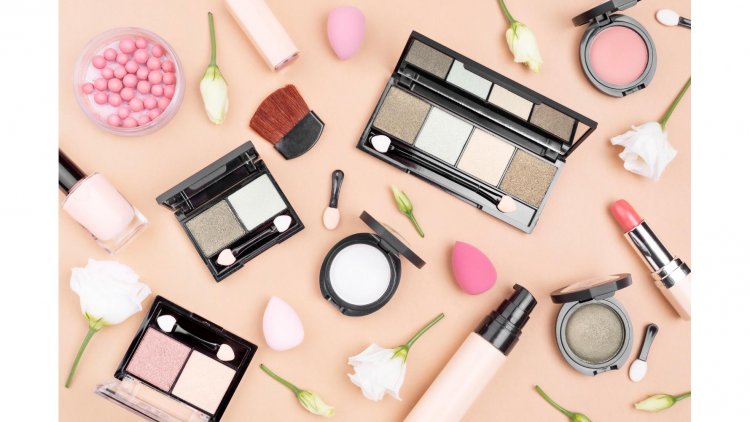Clean Beauty Unfiltered: The Movement Redefining Skincare and Makeup
The beauty industry has undergone a dramatic transformation in recent years, with one of the most impactful shifts being the rise of "clean beauty." This movement, which prioritizes transparency, sustainability, and the use of non-toxic ingredients, is not just a trend—it's a revolution. Clean beauty has challenged long-held norms about what goes into skincare and makeup products, and in doing so, it’s reshaping how we think about our beauty routines and their impact on our health and the environment. In a world increasingly aware of environmental issues and health-conscious living, the clean beauty movement is more than just an aesthetic trend—it’s a call for greater responsibility. With consumers demanding products that are not only effective but also safe and ethically produced, clean beauty has captured the spotlight. This is more than about just swapping out products; it’s about cultivating a new mindset that celebrates holistic self-care, safety, and sustainability. As this mov

The Essence of Clean Beauty: Beyond the Buzzword
At its core, clean beauty is all about products that are made without harmful ingredients—those that are known or suspected to cause harm to human health or the planet. Clean beauty products are typically free from parabens, sulfates, phthalates, synthetic fragrances, and other chemicals that have raised concerns for years due to their potential links to hormonal disruption, skin irritation, and even cancer. In other words, clean beauty is about choosing products that are not only effective but also nourishing and safe for both the skin and the environment.
However, the term "clean beauty" is not universally defined and can vary across different brands and retailers. Despite this ambiguity, clean beauty has a set of values that most brands adhere to: non-toxic ingredients, cruelty-free testing, eco-friendly packaging, and a commitment to transparency. It also involves a shift towards more sustainable practices, such as reducing waste and using plant-based ingredients that are less harmful to the environment.
Clean beauty emphasizes the importance of choosing products that don’t just serve as cosmetic solutions, but as healthy alternatives for skincare and makeup. It aims to ensure that the beauty rituals we perform every day are not only aesthetically pleasing but also beneficial for our long-term health and well-being.
The Clean Beauty Ingredients List: What to Avoid and Why
One of the cornerstones of clean beauty is the focus on ingredient safety. Ingredients matter, and many conventional beauty products are packed with chemicals that, over time, can have detrimental effects on the skin and body. To understand why clean beauty is so essential, it’s important to look at what’s being avoided. Some of the most commonly banned or restricted ingredients in clean beauty products include:
- Parabens: Preservatives used in cosmetics to prevent the growth of bacteria and mold, but also linked to hormone disruption and potential breast cancer risks.
- Sulfates: A common ingredient in shampoos and cleansers that can strip the skin of its natural oils, leading to dryness and irritation.
- Phthalates: Used to increase the flexibility of plastics and as solvents in some cosmetics, phthalates have been linked to reproductive toxicity and endocrine disruption.
- Synthetic Fragrances: These fragrances often contain a mix of chemicals that can cause skin irritation, allergic reactions, and headaches. They’re also harmful to the environment when washed off into water systems.
- Formaldehyde: A known carcinogen that is sometimes used in beauty products as a preservative or to help with mold resistance.
- Toluene: Found in some nail products, toluene is a volatile solvent that can cause skin irritation, dizziness, and damage to the liver and kidneys over prolonged exposure.
The movement toward clean beauty involves not only avoiding harmful ingredients like these but also advocating for products that are simple, effective, and made with naturally derived ingredients that are kind to both skin and the planet. Many clean beauty brands highlight the importance of ingredient transparency, making it easy for consumers to understand exactly what they’re putting on their skin. This sense of openness fosters trust and empowers shoppers to make informed decisions about the products they buy.
The Rise of Eco-Consciousness in Beauty
The clean beauty movement intersects seamlessly with a growing awareness of environmental responsibility. As consumers become more conscientious about their impact on the planet, they’re turning to brands that reflect these values through sustainable packaging, cruelty-free testing, and responsible sourcing of ingredients.
Packaging plays a significant role in the clean beauty movement. Single-use plastic has long been a bane to environmentalists, and beauty brands are taking notice. Many clean beauty companies are leading the charge in using eco-friendly packaging materials, including recycled plastics, glass, bamboo, and other biodegradable options. Additionally, refills and reusable containers have become more common, helping to reduce waste in an industry that has been notorious for its excessive use of non-recyclable materials.
Beyond packaging, clean beauty brands are also focusing on the ethical sourcing of ingredients. This includes prioritizing plant-based and organic ingredients, which not only offer better benefits for the skin but are also often produced through more sustainable and less chemically intensive farming practices. Ethical sourcing also entails ensuring fair wages and safe working conditions for those involved in the production process.
It’s not just about the products themselves; it’s about creating an entire ecosystem of beauty that supports environmental well-being. Clean beauty advocates are pushing for systemic change in the beauty industry, challenging brands to not only clean up their ingredient lists but to adopt more sustainable practices across the entire supply chain.
Skin-First Philosophy: Putting Health Above All Else
A critical element of clean beauty is the skin-first philosophy, which prioritizes the long-term health of the skin over temporary cosmetic effects. Unlike traditional beauty products that focus mainly on enhancing appearance, clean beauty emphasizes nourishing and healing the skin with ingredients that improve skin function and barrier integrity over time.
By using non-toxic, natural ingredients, clean beauty products often provide long-lasting benefits, such as increased hydration, improved elasticity, and balanced skin tone. Many products feature botanicals like aloe vera, chamomile, and rose water, known for their soothing and anti-inflammatory properties. Essential oils like lavender, tea tree, and eucalyptus are also frequently included for their antibacterial and healing effects.
Clean beauty products are often created with a deep understanding of the skin’s unique needs, offering formulations that protect the skin’s natural barrier while supporting its regeneration. For example, nourishing oils like jojoba, argan, and rosehip are commonly found in clean beauty products because they provide deep moisture while being gentle on the skin, making them ideal for all skin types, including sensitive skin.
In contrast to conventional beauty products that can sometimes irritate or strip the skin, clean beauty encourages a more holistic approach to skincare. It’s about treating the skin with respect, feeding it with ingredients that work in harmony with its natural functions rather than working against it.
At this point, clean beauty has proven to be more than just a passing fad. It’s a revolutionary shift in how we think about beauty products, their ingredients, and the broader impact of the beauty industry on our health and environment. As the movement continues to grow, it’s clear that clean beauty is here to stay.
A New Era in Makeup: Clean Beauty in Color Cosmetics
While clean beauty has its roots in skincare, it’s also making significant waves in the makeup world. For years, makeup was associated with a long list of potentially harmful chemicals designed to provide lasting color and coverage. However, clean beauty brands have disrupted this narrative by offering high-performance, non-toxic alternatives that not only enhance the skin but are also formulated with health-conscious ingredients.
Clean beauty makeup aims to provide vibrant, pigmented products without compromising on skin health. Products like foundations, lipsticks, mascaras, and eyeshadows are being reimagined with skin-nourishing ingredients such as vitamins, antioxidants, and plant-based oils. For example, clean foundations now often contain tinted minerals like zinc oxide and titanium dioxide, which offer sun protection while providing coverage, without the harmful chemicals commonly found in traditional foundations.
One standout feature of clean makeup is its ability to perform without relying on artificial ingredients or synthetic fillers. These products deliver impressive results by focusing on high-quality natural pigments and moisturizing formulas. Consumers no longer have to choose between wearing makeup that looks good and makeup that is good for the skin. Clean beauty brands have made it possible to have both, offering makeup that is not only effective but also enhances the overall health and condition of the skin.
The clean makeup trend also includes a focus on sustainable practices, with many clean beauty brands opting for refillable containers or packaging made from recycled materials. The shift toward biodegradable and recyclable packaging, coupled with the move toward reducing carbon footprints, has played a huge role in making clean beauty makeup more eco-conscious. This shift encourages consumers to think about their beauty products beyond just their aesthetic value and consider their long-term environmental impact.
Clean Beauty vs. Conventional Beauty: A Paradigm Shift
The clean beauty movement represents a paradigm shift in how we view beauty products and their effects on our bodies. Traditional beauty products were often formulated with synthetic chemicals designed to create immediate results—products that could deliver smooth skin, bright colors, or strong scents. However, the long-term impact of these chemicals is coming under scrutiny, with concerns about their effects on the skin, the body, and the environment.
In contrast, clean beauty products are formulated with transparency and care, focusing on health-conscious ingredients and sustainable production. While traditional beauty products may rely on synthetic chemicals to achieve desired results quickly, clean beauty emphasizes safe, naturally derived alternatives that offer longer-term benefits without compromising health. Clean beauty brands have challenged conventional beauty standards by creating formulations that are safe for the body and the planet.
The growth of clean beauty can be viewed as a direct response to the increased consumer demand for safer, more transparent products. Consumers are becoming more educated about the ingredients in their beauty products, and they are increasingly drawn to those brands that prioritize transparency and sustainability. In the past, ingredient lists were often hidden behind vague labels, but today’s clean beauty movement insists on full disclosure, giving consumers the power to make informed decisions about the products they put on their skin.
Moreover, clean beauty brands are also pushing for greater ethical accountability. Unlike many conventional brands, clean beauty companies are committed to using cruelty-free practices, ensuring their products are never tested on animals. Many clean beauty brands also support social initiatives, such as fair trade practices and providing support for marginalized communities, further highlighting the connection between clean beauty and ethical responsibility.
The Future of Clean Beauty: A Movement That’s Here to Stay
As more consumers demand cleaner, safer, and more sustainable beauty options, it’s evident that the clean beauty movement is not just a passing trend—it’s the future of the industry. In fact, the growth of clean beauty is indicative of broader societal shifts toward healthier lifestyles and environmental awareness. Consumers today are more conscious of the products they use, not only in terms of their personal health but also in terms of the environmental impact they have. This has created a fertile ground for clean beauty to flourish.
In the coming years, we can expect to see continued innovation within the clean beauty space. The demand for non-toxic, natural ingredients is only going to increase, and brands will continue to develop products that meet the needs of conscious consumers. With advances in sustainable sourcing, packaging, and ethical practices, the clean beauty industry is primed to redefine beauty standards on a global scale.
Furthermore, as more large-scale beauty brands recognize the shift toward clean beauty, we may see an influx of major players embracing cleaner formulations. While smaller, indie brands initially led the charge, some of the world’s largest beauty corporations are beginning to introduce their own clean beauty lines in response to this growing demand. This widespread adoption will undoubtedly help bring clean beauty to the forefront, making it more accessible to a larger audience and encouraging mainstream consumers to rethink their beauty routines.
Ultimately, clean beauty is not just about avoiding harmful chemicals—it’s about reimagining beauty as an expression of health, wellness, and sustainability. As the movement continues to evolve, it will undoubtedly shape the future of beauty, encouraging brands to prioritize the well-being of both consumers and the planet.
The clean beauty movement has undeniably reshaped the landscape of skincare and makeup. It’s clear that this is more than just a trend; it’s a profound shift in how we approach our beauty routines. The emphasis on transparency, health-conscious ingredients, and sustainability has set a new standard in the beauty industry, one that prioritizes not only looking good but feeling good too. As more consumers turn to clean beauty options, the industry will continue to adapt and evolve, ensuring that beauty is not only skin-deep but also mindful, ethical, and environmentally responsible.
Disclaimer:
The content shared on this blog is intended for informational purposes only. Consulting a professional about the highlighted information is recommended. The blog and its authors are not liable for any adverse effects or consequences resulting from the use of the methods or products provided. Always prioritize your health and safety.
What's Your Reaction?





















